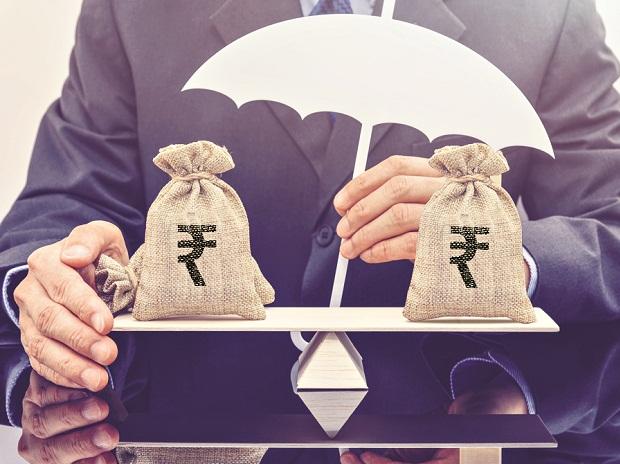Term Insurance premiums on the rise – here is why?
We all live in an age where life is uncertain, and things can change within a short period. Having a term insurance policy will help you plan for a better financial future for your family if any unfortunate incident happens to you. The one other reason for many to favor term insurance is its low premium cost. Though term insurance premiums are considered the cheapest and most effective compared to other insurance plans, they are also on the rise.
Rahul Sinha, an architect by profession, had recently bought himself a term insurance policy from one of the top insurance companies, for a sum assured of Rs 1 crore. However, he has to pay approximately Rs 10,000 per year as a premium for the policy term of 20 years. Rahul had to buy this policy hurriedly as the premium for the same policy was only Rs 8000 two years ago. Because of the COVID-19 pandemic, he postponed his purchase but little did he know about the rise in premiums of term insurance plans. He eventually paid extra and bought the policy mainly to avoid waiting more and paying a higher amount as a premium in the future.
Why are term insurance premiums increasing?
Among all types of insurance policies available in the market, term insurance plans offer the highest benefit as the death benefit received by the family on the demise of the policyholder, is high unlike term plans with return of premium or ULIP, that charge higher premium even in standard cases. The prime reason cited by insurance companies for seeing an uptick in term insurance premiums is the increasing mortality rate among individuals.
The mortality rate is the number of deaths that happened in a particular population within a specific time frame. Insurance companies fix premiums for their policies considering the previous mortality rate trends and expect the death rate in the future will also be on similar lines. This methodology helps them manage the funds collected in the form of a premium for the payment of claims to their customers.
With coronavirus spread in the year 2020, the death rates of individuals across the nation increased, jacking up the mortality rates as well. Even in COVID-19 recovered patients, there is an upsurge in co-morbidities, which means their health risk has also increased. This has led to an increase in claim settlements for insurers which was unexpected. To manage the sudden surge, re-insurers have hiked their premium rates for insurance companies, thereby impacting the term insurance premiums. According to newsmedia, the premiums of term insurance plans may increase by at least 20% this year, considering the ongoing COVID-19 situation and rising reinsurance costs.
The rise in demand for term insurance plans
For a long time, financial advisors suggested not to mix insurance with investment and not choose insurance policies based on whether they offer a return of premium or generate returns but instead look at ways of safeguarding the family after your demise.
The demand for term insurance policies has increased manifold in recent months, especially after the outbreak of COVID-19. The fear of death due to virus infection pushes many individuals to opt for pure protection plans such as term policies more than term insurance with return of premium plans as the level of protection and benefits payouts are higher in the former than the latter.
Even though the premiums of term plans were increased a few months ago, the rising demand for these policies has not subsided. Insurance companies expect this trend to continue for the next few quarters as well, with more new buyers choosing to safeguard themselves with higher life cover, as the COVID-19 cases are surging.
Which factors affect term insurance premiums?
Whether you purchase a return of premium term life insurance or a pure term insurance policy, or ULIP, one common thing that you need to know before buying is the premium. It is the amount that you have to pay to the insurer for availing of insurance benefits.
With the ongoing talk of increased insurance premiums, let’s look at some of the other essential factors that impact your premium.
5 Major factors that affect term insurance premiums
- Age: The younger your age is, the lower your premiums will be. As you keep postponing the decision to buy term insurance, the premium shall also increase accordingly. The reason is quite simple. A person of younger age is generally healthy and fit compared to someone who is in their 40’s or 50’s.
- Lifestyle: Your daily habits have a strong capacity to structure your behavior and, eventually, your lifestyle as well. Smoking and drinking excessive alcohol, which is considered as part of your lifestyle now, can lead you to shell out extra towards your premium. The risk of mortality is directly proportional to the number of cigarettes that you smoke every day. Some insurers even offer special rebates on premiums for non-smokers.
- Occupation: There is risk involved in all types of professions, but there are specific jobs that carry a tremendous amount of danger on a day-to-day basis. Sailing, mining, fishing, fire-fighting, sea diving, defense forces, etc., have enormous risk involved compared to other occupations. Since the individuals who perform these jobs daily are being exposed to uncertainty daily, the term plan premium for such people is high.
- Health: This is one of the essential parameters to calculate the premium of a term plan. As the term policies provide death benefit on the policyholder’s demise, the insurer must ascertain the individual’s health condition before allotting the policy. For this reason, the applicants are asked to undergo a medical test that will indicate any existing health condition. The company can deduce the risk and fix premiums accordingly. For example, those with high blood pressure, obesity, diabetes, heart problems, etc., are considered to have an increased mortality risk. Therefore, the premium for term insurance for 70-year-old in India will be high because of the possible health complications in them, which significantly increases the cost of availing of a term plan.
- Policy Term: The duration of the term plan you are buying also plays a role in the premium calculation. The longer the policy tenure and the larger the live cover, the premium is also going to be higher. The risk of covering your life for a longer duration means higher responsibility for the insurer.
The cost of buying a term plan might be on the rise, but still, it is one of the most affordable options to protect your family from the financial breakdown in your absence. With term plans now available online, there is a considerable difference seen in the cost of policies bought offline, which are generally costlier. To finalize your needs, compare the available policies within your budget and complete the purchase considering the premium as a cost you pay to protect yourself from future uncertainties.





























